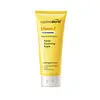What's inside
What's inside
 Key Ingredients
Key Ingredients

 Benefits
Benefits

 Concerns
Concerns

 Ingredients Side-by-side
Ingredients Side-by-side

Water
Skin ConditioningSodium Cocoamphoacetate
CleansingCocamidopropyl Betaine
CleansingSodium C14-16 Olefin Sulfonate
CleansingAcrylates/Beheneth-25 Methacrylate Copolymer
Propylene Glycol
HumectantLauramine Oxide
CleansingGlycerin
HumectantEthoxydiglycol
HumectantSalicylic Acid
MaskingTocopheryl Acetate
AntioxidantCeramide NP
Skin ConditioningPEG-7 Glyceryl Cocoate
EmulsifyingLactic Acid
BufferingSodium Carbonate
BufferingSodium Chloride
MaskingPolysorbate 20
EmulsifyingParfum
MaskingImidazolidinyl Urea
PreservativeWater, Sodium Cocoamphoacetate, Cocamidopropyl Betaine, Sodium C14-16 Olefin Sulfonate, Acrylates/Beheneth-25 Methacrylate Copolymer, Propylene Glycol, Lauramine Oxide, Glycerin, Ethoxydiglycol, Salicylic Acid, Tocopheryl Acetate, Ceramide NP, PEG-7 Glyceryl Cocoate, Lactic Acid, Sodium Carbonate, Sodium Chloride, Polysorbate 20, Parfum, Imidazolidinyl Urea
Water
Skin ConditioningGlycerin
HumectantSodium Lauryl Sulfate
CleansingCocamidopropyl Betaine
CleansingCocamide Methyl Mea
Acrylates Copolymer
Sodium Chloride
MaskingSodium Cocoamphoacetate
CleansingCitric Acid
BufferingSodium Hydroxide
BufferingTetrasodium EDTA
Propylene Glycol
HumectantAlpha-Glucan Oligosaccharide
CleansingPEG-7 Glyceryl Cocoate
EmulsifyingPolymnia Sonchifolia Root Juice
Skin ConditioningMaltodextrin
AbsorbentAsiaticoside
AntioxidantMadecassic Acid
Skin ConditioningCentella Asiatica Leaf Extract
Skin ConditioningAsiatic Acid
Skin ConditioningAnthemis Nobilis Flower Extract
MaskingHelianthus Annuus Seed Oil
EmollientCeramide NP
Skin ConditioningLactobacillus
Skin ConditioningBoswellia Serrata Extract
Skin ConditioningGlyceryl Citrate/Lactate/Linoleate/Oleate
EmulsifyingPolyglyceryl-2 Oleate
EmulsifyingPhenoxyethanol
PreservativePotassium Sorbate
PreservativeWater, Glycerin, Sodium Lauryl Sulfate, Cocamidopropyl Betaine, Cocamide Methyl Mea, Acrylates Copolymer, Sodium Chloride, Sodium Cocoamphoacetate, Citric Acid, Sodium Hydroxide, Tetrasodium EDTA, Propylene Glycol, Alpha-Glucan Oligosaccharide, PEG-7 Glyceryl Cocoate, Polymnia Sonchifolia Root Juice, Maltodextrin, Asiaticoside, Madecassic Acid, Centella Asiatica Leaf Extract, Asiatic Acid, Anthemis Nobilis Flower Extract, Helianthus Annuus Seed Oil, Ceramide NP, Lactobacillus, Boswellia Serrata Extract, Glyceryl Citrate/Lactate/Linoleate/Oleate, Polyglyceryl-2 Oleate, Phenoxyethanol, Potassium Sorbate
Ingredients Explained
These ingredients are found in both products.
Ingredients higher up in an ingredient list are typically present in a larger amount.
Ceramide NP is a type of ceramide and formally known as ceramide 3.
Ceramides are intercellular lipids naturally found in our skin that bonds dead skin cells together to create a barrier. They are known for their ability to hold water and thus are a great ingredient for dry skin.
Ceramides are an important building block for our skin barrier. A stronger barrier helps the skin look more firm and hydrated. By bolstering the skin ceramides act as a barrier against irritating ingredients. This can help with inflammation as well.
If you would like to eat ceramides, sweet potatoes contain a small amount.
Read more about other common types of ceramides here:
Ceramide AP
Ceramide EOP
Cocamidopropyl Betaine is a fatty acid created by mixing similar compounds in coconut oil and dimethylaminopropylamine, a compound with two amino groups.
This ingredient is a surfactant and cleanser. It helps gather the dirt, pollutants, and other impurities in your skin to be washed away. It also helps thicken a product and make the texture more creamy.
Being created from coconut oil means Cocamidopropyl Betaine is hydrating for the skin.
While Cocamidopropyl Betaine was believed to be an allergen, a study from 2012 disproved this. It found two compounds in unpure Cocamidopropyl Betaine to be the irritants: aminoamide and 3-dimethylaminopropylamine. High-grade and pure Cocamidopropyl Betaine did not induce allergic reactions during this study.
Learn more about Cocamidopropyl BetaineGlycerin is already naturally found in your skin. It helps moisturize and protect your skin.
A study from 2016 found glycerin to be more effective as a humectant than AHAs and hyaluronic acid.
As a humectant, it helps the skin stay hydrated by pulling moisture to your skin. The low molecular weight of glycerin allows it to pull moisture into the deeper layers of your skin.
Hydrated skin improves your skin barrier; Your skin barrier helps protect against irritants and bacteria.
Glycerin has also been found to have antimicrobial and antiviral properties. Due to these properties, glycerin is often used in wound and burn treatments.
In cosmetics, glycerin is usually derived from plants such as soybean or palm. However, it can also be sourced from animals, such as tallow or animal fat.
This ingredient is organic, colorless, odorless, and non-toxic.
Glycerin is the name for this ingredient in American English. British English uses Glycerol/Glycerine.
Learn more about GlycerinPeg-7 Glyceryl Cocoate is created from polyethylene glycol and fatty acids from coconut oil.
It is a synthetic polymer with emulsifying and cleansing properties.
As an emulsifier, Peg-7 Glyceryl Cocoate prevents ingredients such as oils and water from separating. It also helps rinse away oils, dirt, and pollutants from skin.
Peg-7 Glyceryl Cocoate may not be fungal acne safe. It can also dry out skin.
Learn more about PEG-7 Glyceryl CocoatePropylene Glycol is an odorless, colorless liquid. As a humectant, it helps skin retain moisture. It also aids in delivering active ingredients.
Another role of this ingredient is preventing a product from melting or freezing. Propylene glycol also adds antimicrobrial properties to a product, elongating product lifespan.
This ingredient is considered an organic alcohol and commonly added into both cosmetics and foods.
Those with sensitive skin or conditions may develop a rash when using this ingredient.
Learn more about Propylene GlycolChances are, you eat sodium chloride every day. Sodium Chloride is also known as table salt.
This ingredient has many purposes in skincare: thickener, emulsifier, and exfoliator.
You'll most likely find this ingredient in cleansers where it is used to create a gel-like texture. As an emulsifier, it also prevents ingredients from separating.
There is much debate on whether this ingredient is comedogenic. The short answer - comedogenic ratings don't tell the whole story. Learn more about comegodenic ratings here.
The concensus about this ingredient causing acne seems to be divided. Research is needed to understand if this ingredient does cause acne.
Scrubs may use salt as the primary exfoliating ingredient.
Learn more about Sodium ChlorideWe don't have a description for Sodium Cocoamphoacetate yet.
Water. It's the most common cosmetic ingredient of all. You'll usually see it at the top of ingredient lists, meaning that it makes up the largest part of the product.
So why is it so popular? Water most often acts as a solvent - this means that it helps dissolve other ingredients into the formulation.
You'll also recognize water as that liquid we all need to stay alive. If you see this, drink a glass of water. Stay hydrated!
Learn more about Water